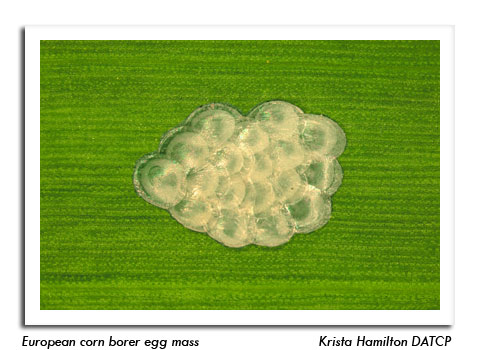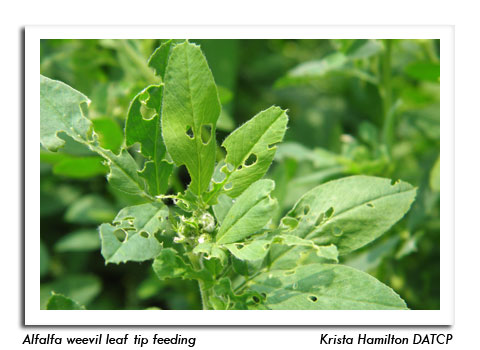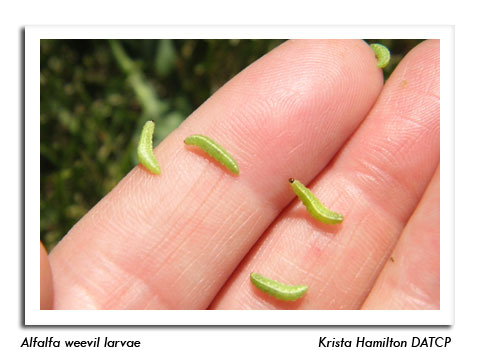
 |
|
|
Looking Ahead
Volume 59 Number 6 Date 06/05/2014 EUROPEAN CORN BORER - Moths are depositing eggs on vegetable and weed hosts in southern and central locations where 450 degree days (modified base 50°F) were recently surpassed. Snap beans, lima beans, peppers and potatoes will be used for oviposition until corn taller than 18 inches becomes available. The spring flight is expected to peak by June 15 near Beloit, Lancaster, Spring Green and other advanced sites. BLACK CUTWORM - The primary corn-cutting window is now open and could extend through late June this year. Crop consultants and corn growers should continue to inspect fields for evidence of this pest during the next 2-3 weeks or until plants have reached the five-leaf (V-5) stage. A rescue treatment is justified if 3% of corn plants are damaged. CODLING MOTH - Emergence of spring moths accelerated from May 29-June 4 and the biofix was set at most monitoring sites. Controls directed against first generation larvae are most effective when applied at approximately 250 degree days (base 50°F) post-biofix, which is the equivalent of 17 days at daily high temperatures of 75°F and daily lows of 55°F. Exact treatment dates will vary by location and with temperatures in the week ahead. ALFALFA WEEVIL - Leaf tip damage is expected to become more pronounced next week as larvae transition into the larger and most destructive third and fourth-instars. Alfalfa should be harvested as soon as possible to limit larval feeding and avoid the need for insecticidal control. EASTERN TENT CATERPILLAR - Most tents in roadside trees are vacant and pupation has started. The earliest adults could begin emerging by June 12, following the accumulation of 725 degree days (modified base 50°F). MONARCH BUTTERFLY - Migrants have arrived in Wisconsin and were noted this week in Columbia, Fond du Lac, Grant, Green, Marathon, Monroe and Sauk counties. The return of monarchs was uncertain after the number of butterflies completing the 2013 fall migration from the northern United States and Canada to a mountainside forest in Mexico dropped precipitously to the lowest level yet documented. According to surveys carried out by World Wildlife Fund and Mexico's National Commission on Protected Areas, 2013 was the worst year in recorded history for the butterflies. The entire hibernating population in the 2013-2014 winter season occupied a mere 1.6 acres of forest, a 44% decrease from the previous year and the lowest level documented since data collection began two decades ago. Reasons for the decline include extreme climate events in the U.S. and Canada, deforestation in Mexico, and particularly widespread destruction of milkweed across much of the monarch's range in the Midwest, the butterfly's spring and summer breeding area. Wisconsin farmers have historically been effective conservationists of monarchs and other pollinators and can again contribute to their recovery by reducing herbicide use on critical milkweed habitat on farm lands and by supporting milkweed restoration. Agricultural milkweed conservation has never been more important now that the monarch migration is in peril and at risk of disappearing entirely. -- Krista Hamilton, DATCP Entomologist 





|
|
|